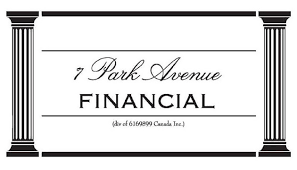|
Best Purchase Order Finance Company Solutions? We Have Them!
Stop Declining Profitable Orders: PO Financing Solutions
You’re looking for purchase order finance – Talk to us about PO finance and Financing Inventory in Canada
You've arrived at the right address! Welcome to 7 Park Avenue Financial
UPDATED 9/05/2025
ARE YOU UNAWARE OR DISSATISFIED WITH YOUR CURRENT BUSINESS FINANCING OPTIONS?
CONTACT US - OUR EXPERTISE = YOUR RESULTS!
CALL NOW - DIRECT LINE - 416 319 5769 - Let's talk or arrange a meeting to discuss your needs
EMAIL - sprokop@7parkavenuefinancial.com

"The way to get started is to quit talking and begin doing." - Walt Disney
Trapped Between Opportunity and Cash Flow Reality
Your biggest sales opportunity just arrived, but you lack the working capital to fulfill it.
While competitors with deeper pockets capture market share, you're forced to decline profitable orders or risk everything on a single transaction.
Let the 7 Park Avenue Financial team show you how PO financing eliminates this painful choice, funding your inventory purchases so you can scale confidently without cash flow constraints around issues such as seasonal cash flow on sales.
Why PO Financing Matters
Purchase order (PO) financing in Canada helps businesses fund inventory and contracts when traditional bank lending falls short. It provides creative financing options to meet supplier and customer needs. If your competitors are using it for growth, shouldn’t your firm do the same?
Growth Without Proper Financing Is Risky
Canadian businesses may secure new orders and contracts but still face setbacks without proper financing. Lacking funding often leaves companies at a disadvantage against well-financed competitors. PO financing fills that gap.
Why Banks Say No to PO Finance
Traditional Canadian banks rarely finance purchase orders or inventory. That’s where PO financing from a purchase order financing company begins around your PO. It steps in where banks stop.
What PO Financing Really Covers
PO finance often includes three parts: funding the order, financing the inventory, and managing the receivable from the sale. This makes it a complete working capital solution. It is flexible and built around your business’s needs.
The Creative Edge of PO Finance
Unlike rigid bank lending, PO financing adapts to your situation. It works by structuring deals that align supplier timelines and customer requirements. The goal is to make transactions seamless for all parties.
Keys to a Successful Transaction
Strong PO financing relies on three elements: a firm, non-cancellable order, a creditworthy customer, and clear payment terms. These factors reduce risk and ensure smooth execution.
How the Process Works
Here’s how PO finance functions. Your company receives a purchase order. The PO finance provider pays your supplier directly—through cash or a letter of credit.
Your business fulfills the order, while the finance firm takes title to the PO, the inventory, and the receivable. When your customer pays, the finance provider collects repayment, less a financing fee of roughly 2.5–3% per month in Canada.
Inventory Financing Options
Sometimes, inventory financing can be arranged separately. However, most transactions rely on collateralizing the full cycle—order, inventory, and receivable. This structure reduces risk and improves funding availability.
Case Study: PO Financing Success
Company: (Toronto-based industrial equipment supplier)
Challenge: Received $450,000 order from major construction company but lacked working capital to purchase materials and fulfill the contract within the required 45-day timeline.
Solution: Implemented PO financing solution through 7 Park Avenue Financial, securing funding within 48 hours to purchase necessary materials and begin production immediately.
Results: Successfully fulfilled the order on time, maintained customer relationship, generated $90,000 profit margin, and established ongoing financing relationship for future large orders. Customer increased subsequent orders by 40% due to reliable delivery performance and assistance from the PO financing company.
Key Takeaways
- Customer Credit Evaluation: Understanding that your customer's creditworthiness, not yours, determines approval creates the foundation for successful PO financing applications.
- Transaction Structure: Recognizing PO financing as order-specific funding rather than general business credit changes how you approach growth opportunities and financial planning.
- Cost-Benefit Analysis: Calculating whether order margins exceed purchase order financing cost ensures profitable transactions while building sustainable business practices to pay suppliers.
- Documentation Requirements: Preparing proper purchase orders, supplier agreements, and customer verification streamlines approval processes and reduces transaction delays in your cash advance when the financing company pays.
- Industry Fit Assessment: Identifying whether your business model, customer base, and order patterns align with PO financing criteria prevents wasted application efforts and focus.
CONCLUSION - The Bottom Line!
Purchase order finance in Canada helps businesses grow when bank financing is unavailable.
It ensures suppliers are paid, customers are served, and working capital flows smoothly.
Call 7 Park Avenue Financial, a trusted Canadian business financing advisor with proven expertise to see how PO finance can help your firm.
Quick comparison: PO financing vs bank loans vs receivable factoring vs inventory finance
| Feature |
Purchase Order (PO) Financing |
Bank Loan (Term / Line) |
Receivable Factoring |
Inventory Financing |
| Primary use case |
Fund supplier costs to fulfil a specific purchase order or contract. |
Longer-term capital, working-capital lines, or asset purchases. |
Accelerate cash by selling invoices or advancing against receivables. |
Purchase or hold stock; bridge gaps between purchase and sale. |
| Typical collateral |
The purchase order, purchased inventory, and resulting receivable. |
Business assets, personal guarantees, and financial statements. |
Accounts receivable (often customer-credit dependent). |
Inventory plus, sometimes, purchase orders or receivables. |
| Approval speed |
Fast to moderate — days to a couple of weeks, depending on complexity. |
Slow — weeks to months; depends on underwriting and documentation. |
Fast — days for established relationships; quicker with repeat clients. |
Moderate — days to weeks depending on inventory valuation and terms. |
| Typical cost |
Financing fee + service charges; commonly ~2.5–3% per month on funded amounts in Canada. |
Lower annual interest rates for qualified borrowers; fees/penalties may apply. |
Discount fee on invoices (varies by customer credit and term); plus service fees. |
Interest or fee on borrowed amount; rates vary by lender and collateral quality. |
| Best for |
Businesses with firm, non-cancelable POs and creditworthy end customers. |
Established firms needing predictable capital or investment financing. |
Companies with strong invoicing history and creditworthy debtors. |
Retailers, distributors, or manufacturers with stock needs and turnover. |
| Pros |
Enables growth without prepaying suppliers; aligns funding to sales cycle. |
Generally lower financing costs; predictable repayment structure. |
Immediate cash conversion of receivables; offloads collections risk. |
Directly funds inventory purchases; flexible against stock levels. |
| Cons / risks |
Higher short-term cost; provider may take title or require assignment of receivables. |
Stringent underwriting; slower access; often requires covenants and guarantees. |
Fees reduce margins; depends on debtor creditworthiness; may affect customer relations. |
Requires accurate inventory valuation; holding costs and obsolescence risk. |
| When to choose |
When a specific order is blocking fulfilment and banks decline funding. |
When you need long-term financing or a reliable credit facility. |
When you need to convert invoices to cash quickly and have creditworthy customers. |
When stock purchasing is the main constraint on sales growth. |
| How it settles |
Provider is repaid from customer payment; any remaining receivable returns to seller per agreement. |
Regular principal + interest payments per loan agreement. |
Provider collects invoice payments or remits balance after fees. |
Repaid from sale of inventory or as part of receivable collections. |
FAQ
What types of businesses qualify for PO financing? PO financing eligibility typically requires established businesses with creditworthy customers, verified purchase orders, and gross margins above 20%. Manufacturing, wholesale, and distribution companies with B2B sales models find the most success with this financing option.
How quickly can PO financing be approved and funded? PO financing approval speed depends on customer creditworthiness verification and order documentation completeness. Most reputable lenders can provide decisions within 24-48 hours and fund approved transactions within 3-5 business days once all documentation is submitted.
What are the typical costs associated with PO financing? PO financing costs generally range from 2-6% of the order value, varying based on customer credit strength, transaction size, and industry risk factors. Unlike traditional loans, you only pay fees on orders you actually finance, making it a pay-as-you-grow solution.
Which industries benefit most from PO financing? PO financing works best for manufacturing, wholesale distribution, import/export, and retail businesses with long production cycles or seasonal demand spikes. Industries requiring significant upfront inventory investments before customer payment find this financing particularly valuable.
How does PO financing differ from traditional business loans? PO financing approval depends on your customer's creditworthiness rather than your business credit score or collateral. Traditional loans require personal guarantees and lengthy approval processes, while PO financing focuses on the specific transaction and customer's ability to pay.
10 Search Query Questions
Who provides PO financing in Canada? PO financing providers in Canada include specialized alternative lenders, factors, and some chartered banks offering trade finance solutions. Companies like 7 Park Avenue Financial focus specifically on helping Canadian businesses access purchase order financing for growth opportunities.
What documentation is needed for PO financing applications? PO financing applications require valid purchase orders, customer credit information, supplier invoices, business financial statements, and proof of customer payment history. Lenders evaluate both your operational capacity and your customer's creditworthiness during the approval process.
When should businesses consider PO financing over other options? PO financing makes sense when traditional lending isn't available, orders exceed current cash flow capacity, or seasonal demand creates temporary funding gaps. It's particularly valuable for businesses with strong customer relationships but limited working capital.
Where can Canadian businesses find reliable PO financing? Canadian businesses can find PO financing through specialized commercial finance companies, factoring firms, and business development financial institutions. Online platforms and business financing consultants like 7 Park Avenue Financial help connect businesses with appropriate lenders.
Why do banks often decline PO financing requests? Banks decline PO financing because it requires specialized underwriting focused on customer creditworthiness rather than traditional collateral-based lending. Many banks lack the expertise or appetite for transaction-based financing that doesn't fit standard loan criteria.
How long does the PO financing process typically take? PO financing timelines vary from 24 hours for simple transactions with strong customers to several weeks for complex international orders. Pre-approval processes can streamline future transactions, making repeat financing much faster for established relationships.
PO Financing Statistics
- 23% of Canadian SMEs report declining profitable orders due to cash flow constraints (BDC Survey 2024)
- PO financing can improve cash conversion cycles by 45-60 days for eligible businesses
- 78% of businesses using PO financing report improved customer satisfaction scores
- Average PO financing transaction size in Canada: $125,000
- Businesses using PO financing show 34% faster revenue growth compared to traditional financing users
Citations
- Business Development Bank of Canada. "Small Business Financing Statistics." BDC Research, 2024. https://www.bdc.ca
- Canadian Federation of Independent Business. "Cash Flow Challenges in Canadian SMEs." CFIB Reports, vol. 34, no. 2, 2024, pp. 12-18. https://www.cfib-fcei.ca
- Export Development Canada. "Trade Finance Solutions for Canadian Exporters." EDC Insights, 2024. https://www.edc.ca
- Statistics Canada. "Business Financing Patterns in Canada." Government of Canada Publications, 2024. https://www.statcan.gc.ca
-
7 Park Avenue Financial ."From Contract to Cash: How Canadian Businesses Fund Large Orders". https://www.linkedin.com/pulse/from-contract-cash-how-canadian-businesses-fund-large-stan-prokop-8zrsc/

' Canadian Business Financing With The Intelligent Use Of Experience '
STAN PROKOP
7 Park Avenue Financial/Copyright/2025

ABOUT THE AUTHOR: Stan Prokop is the founder of 7 Park Avenue Financial and a recognized expert on Canadian Business Financing. Since 2004 Stan has helped hundreds of small, medium and large organizations achieve the financing they need to survive and grow. He has decades of credit and lending experience working for firms such as Hewlett Packard / Cable & Wireless / Ashland Oil
|